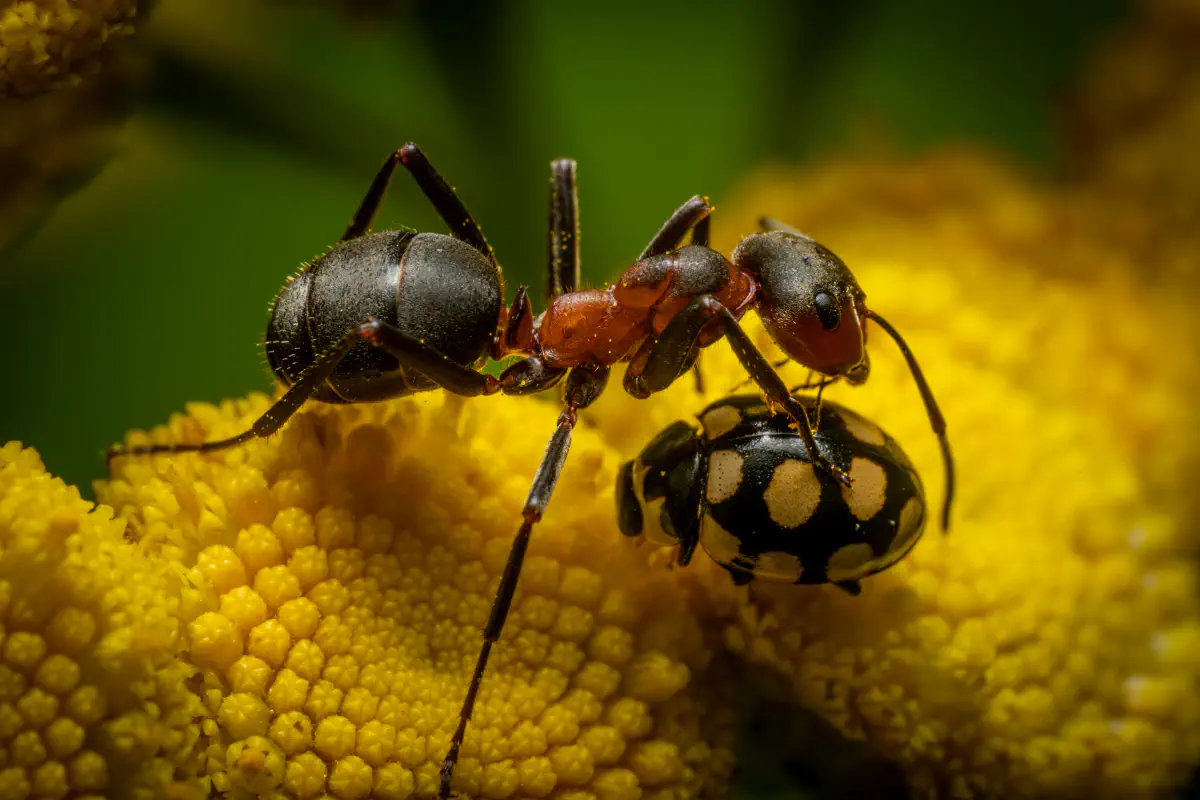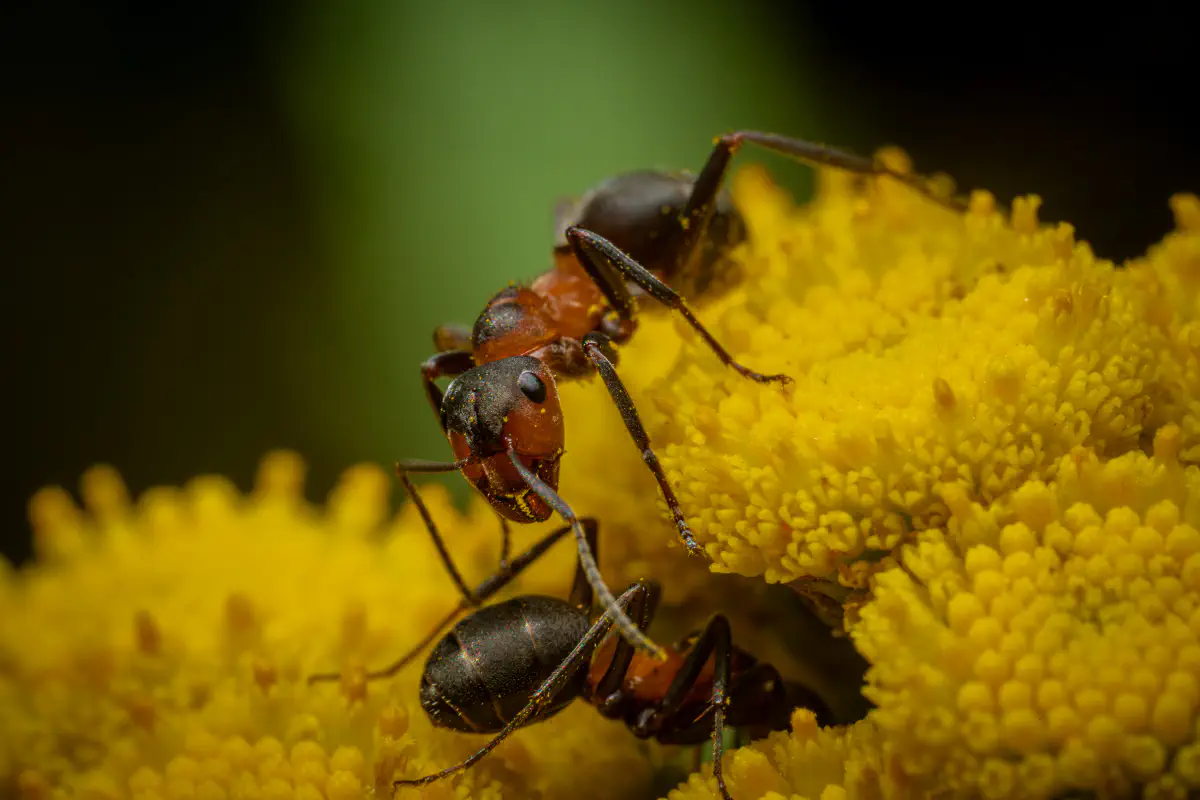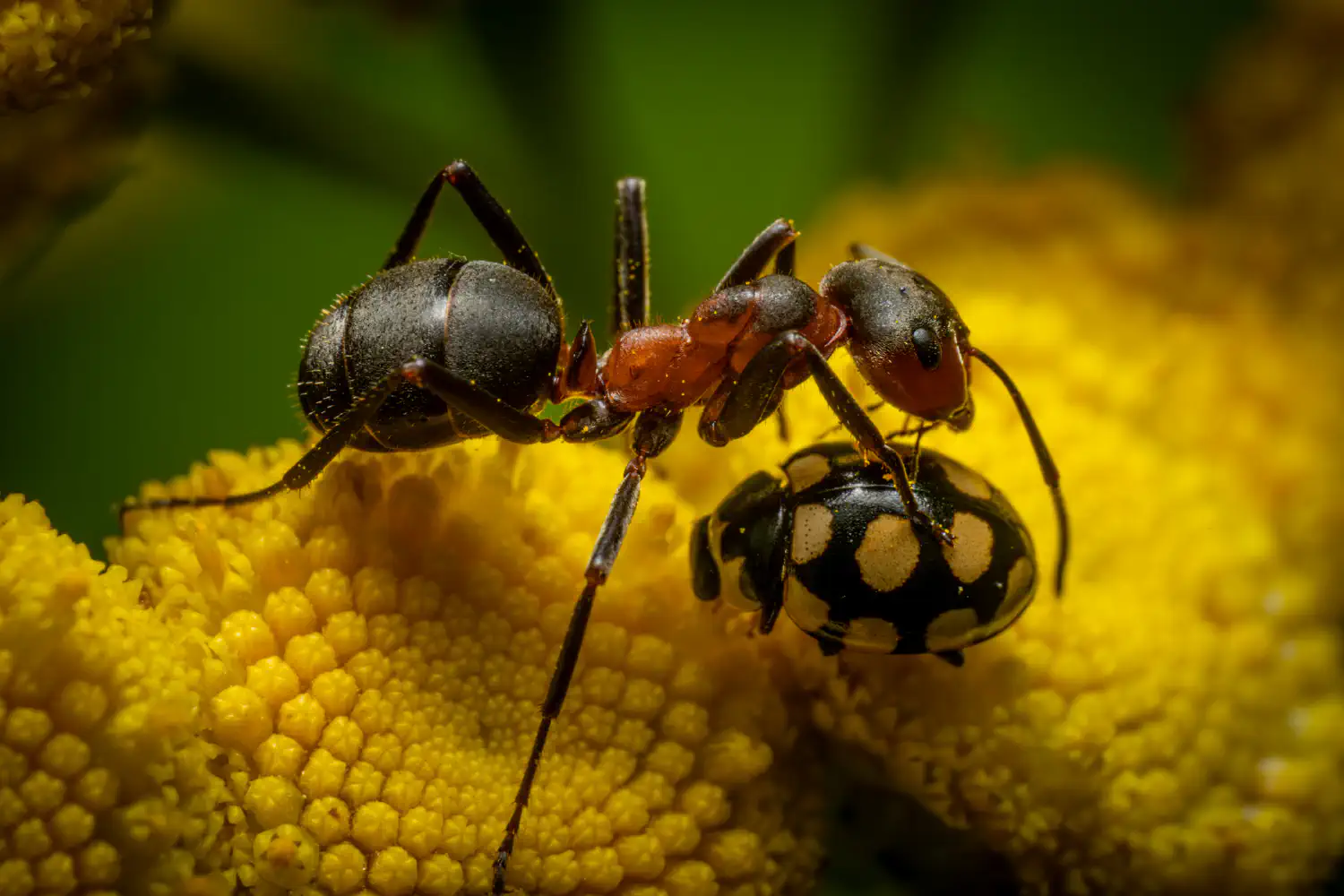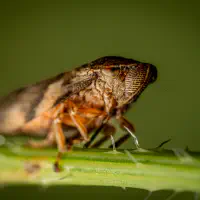Explained as easy as pie — the exciting adventures of ants
Ants are fascinating little creatures that live in large communities. There are more than 12,000 different species of ants in the world. To make things easier, let’s look at one particular species: the black-backed meadow ant. This type of wood ant is mainly found in Europe and has some characteristics that make it special.

Life in an ant colony
Thousands of the little creatures live together in an ant colony. In the case of the black-backed meadow ant, a colony can contain up to 80,000 workers. But when talking about “workers”, keep in mind that with ants, males are really only needed for “the one thing”.
Females, on the other hand, are the driving force behind every colony and are led by … the queen, of course.
Ant colonies are well organized. Each ant has a specific task: some take care of the larvae, others are responsible for building and maintaining the nest, and still others search for food. This division of tasks makes life in the colony efficient and successful.
The black-backed meadow ant lives in mounds of chewed stalks, tree needles, and small branches. These mounds can have a diameter of over one meter but are always very flat. The ants build their nests in sunny places in open areas such as dry grassland and heaths.
A fair division of labor: every ant’s life counts
There is a clear division of labor in a colony. The queen has the most important task: she lays the eggs from which the new ants hatch. A queen can live up to 20 years. The workers, on the other hand, only live for around two to three years. Their tasks change in the course of their lives. Young workers stay in the nest and look after the larvae. Older workers then take on tasks outside the nest, such as collecting food and building new tunnels.
The ants that look after aphids have a particularly interesting task. The black-backed meadow ant cares for aphids to collect their honeydew. This sweet sap is an important source of food for the ants. In return, the ants protect the aphids from predators. This mutual protection is called “symbiosis”.
Incidentally, ants are skillful hunters. They feed on insects and other small prey. They are very organized and work together to find food and bring it back to the nest. The black-backed meadow ant has exceptionally well-developed feeding glands, which enable it to feed its larvae particularly well.
A fascinating feature of many ants is their ability to communicate. They use chemical signals, known as pheromones, to talk to each other. When an ant finds a food source, it leaves a scent trail for other ants to follow.

Adventures are the order of the day
Ants experience a lot. Protecting their colony and nest is very important. The tireless little creatures have to defend themselves against many threats, such as other ant species or larger insects. When enemies attack the nest, the workers bravely defend it. They use their powerful jaws and squirt their acid to drive away the attackers.
Another exciting adventure is the founding of a new colony. This happens when the young queens and males swarm out of the nest to mate. After mating, the young queens look for a suitable place to start a new nest. This process is very risky as the queens often travel long distances and are exposed to many dangers.
Ants are also masters of adaptation. They live in different environments, from deserts to rainforests, and have developed amazing survival strategies. Some ant species, such as the weaver ants, build their nests in trees by weaving leaves together. Others, like the leaf-cutter ants, cut up leaves and carry them to their nest to grow mushrooms for food.
The black-backed meadow ant is under special conservation in Germany. Their nests are protected. This means that we have to take particularly good care of them so that these fascinating little creatures can continue to live in our natural environment.
Ants show us how important cooperation and organization are in a community. Only the cohesion of an ant colony ensures its survival: This is mutual solidarity that happens every day in our gardens and forests. Ants work hard to maintain their colony and their lives can be quite demanding. And because they seem to do the same or similar things all the time, one could even be forgiven for thinking that ants’ lives are somewhat uniform. Only a closer look reveals the daily wonders that these little creatures experience.

Little beings in print
Order our calendars and books today!
Compiled with love. Printed sustainably. Experience our little beings even more vividly in print. All our publications are available for a small donation.



